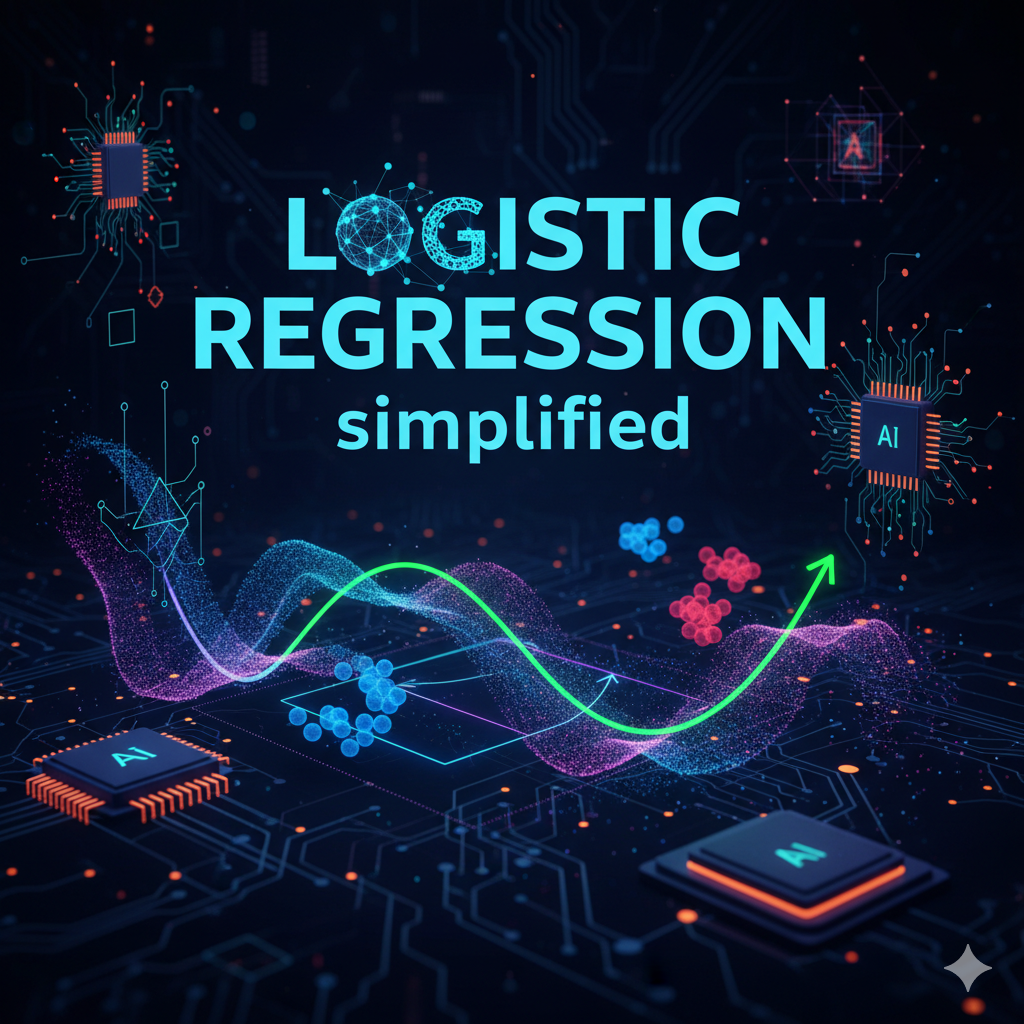What is Logistic Regression?
Ever wondered how Netflix decides whether to recommend you a movie? Or how an email app figures out what’s spam? Behind the scenes, a simple but powerful algorithm called Logistic Regression often plays a key role.

Despite the fancy name, Logistic Regression isn’t about predicting prices or numbers. Instead, it’s used when the outcome is a yes or no, like:
- Will a customer buy this product?
- Is this email spam?
- Does a patient have diabetes?
It’s basically a smart system that looks at input data (like age, income, or medical results) and predicts the probability of something happening like whether the answer will be 1 (Yes) or 0 (No).
How Does It Work?
Let’s say we want to predict if someone will buy a new phone based on their income.
- Logistic Regression takes that input (income).
- It applies a formula (kind of like drawing a straight line, just like in linear regression).
- Then it runs the result through something called the sigmoid function — a squiggly S-shaped curve that turns any number into a value between 0 and 1.

This final number is treated as the probability that the person will buy the phone.
- If the probability is above 0.5, the model says: “Yes“
- If it’s below 0.5, the model says: “No“
Real-World Use Cases
- Healthcare: Will this patient develop diabetes?
- Marketing: Is this customer likely to churn?
- Finance: Is this transaction fraudulent?
- Email filtering: Is this message spam?
Logistic Regression is used everywhere because it’s fast, easy to interpret, and often surprisingly accurate.
Quick Summary
Logistic Regression helps you make yes/no decisions based on data. It doesn’t predict how much but whether or not.
Related Read
Linear Regression for Beginners

1 thought on “Logistic Regression simplified”